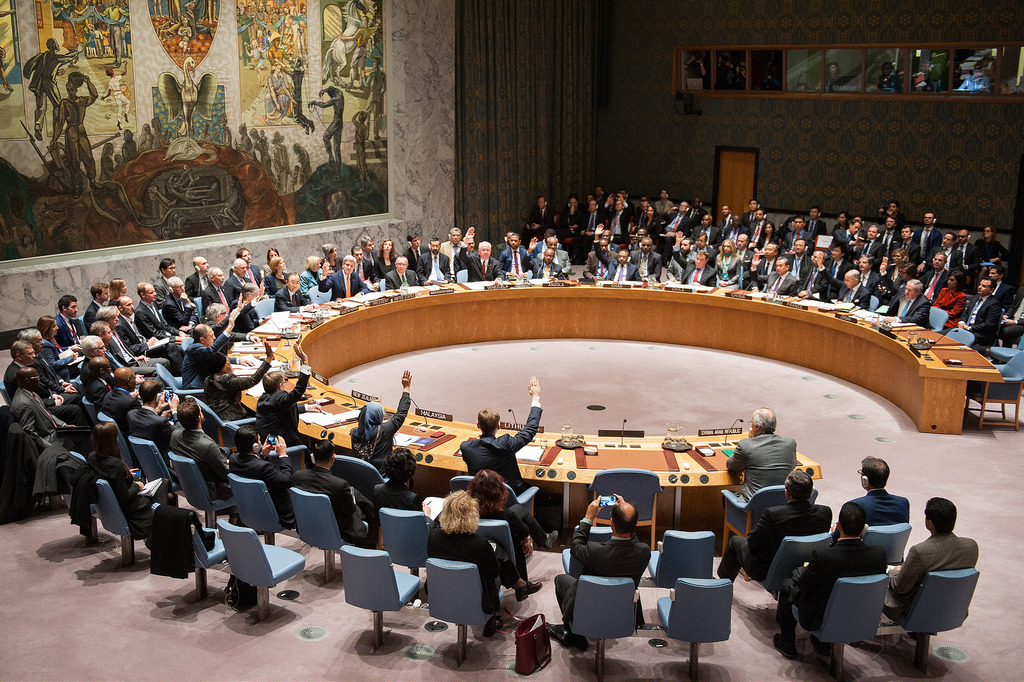
Understanding the Security Council Veto

Of all of the organs of the United Nations, perhaps the most well known is the Security Council. Maybe the most well-known aspect of the Security Council is the use of the veto power. Even if it is the most well-known aspect of the Security Council, the actual use of a veto doesn’t happen all that often today—most Security Council resolutions do not advance to a final vote without the support of the five permanent members of the Council.
Many people are surprised to learn that the UN Charter never explicitly mentions a veto power. Article 27 of the Charter reads:
- Each member of the Security Council shall have one vote.
- Decisions of the Security Council on procedural matters shall be made by an affirmative vote of nine members.
- Decisions of the Security Council on all other matters shall be made by an affirmative vote of nine members including the concurring votes of the permanent members; provided that, in decisions under Chapter VI, and under paragraph 3 of Article 52, a party to the dispute shall abstain from voting.
The Charter never mentions veto power, but the third clause of Article 27 dictates that all substantive issues must be passed with nine votes and the consent of the five permanent members (People’s Republic of China, France, Russian Federation, United Kingdom, and United States). The Charter never defines what “concurring votes” means, but historically the Council has viewed it as a vote in favor or an abstention. In practice, this means a resolution would fail due to lack of consent of the permanent five members with a vote of 14 in favor, one opposed (France) and zero abstentions but would pass with a vote of 10 in favor, zero opposed and five abstentions (the permanent members). It is important to note the consent clause only applies to substantive measures, e.g., resolutions and amendments, and not procedural votes, e.g., motions to adjourn, set limits of debate, and inviting a member to be a party to the dispute, among others.
The history of requiring the consent of the permanent members actually has its roots with the League of Nations. Article 5 of the Covenant of the League of Nations required the approval of all members of the League Council for any substantive issue. In 1936 the League Council expanded to 15 members, each needing to give its consent for any resolution. This effectively made any real action from the League Council impossible. The League of Nations’ requirement for consent is often viewed as one of the factors which lead to the League’s ineffectiveness and subsequent dissolution.
The UN as we know it today may not have existed if substantive actions by the Security Council did not require the consent of the permanent five members. When negotiations on the UN Charter began, many less-powerful States tried not only to prevent the Council from requiring the consent of the permanent five members, but from having permanent members on the Council at all. The United States made it clear that if the Charter were to be approved by its Senate, then substantive issues in the Council must have the consent of the five permanent members.
The resentment from non-permanent members toward the power held by the permanent five members has not disappeared in the past 70 years. Security Council reform has been a major topic for some time, with non-permanent States calling for a some combination of a new makeup of Council membership, expanding the number of permanent seats, or expanding the number of Member States that must give consent on substantive issues and many others. Any reform of the Council would require, you guessed it, the consent of the permanent members, displaying just how powerful those five States are within the Security Council. We will take up the issue of Security Council reform in a future blog post.
Keep Up With The Accords
More to read
The AMUN Accords is a premier resource for fact-based Model United Nations simulations. We are always looking for new contributors. Want to write for the AMUN Accords? Check out out the submission guidelines and then get in touch!




